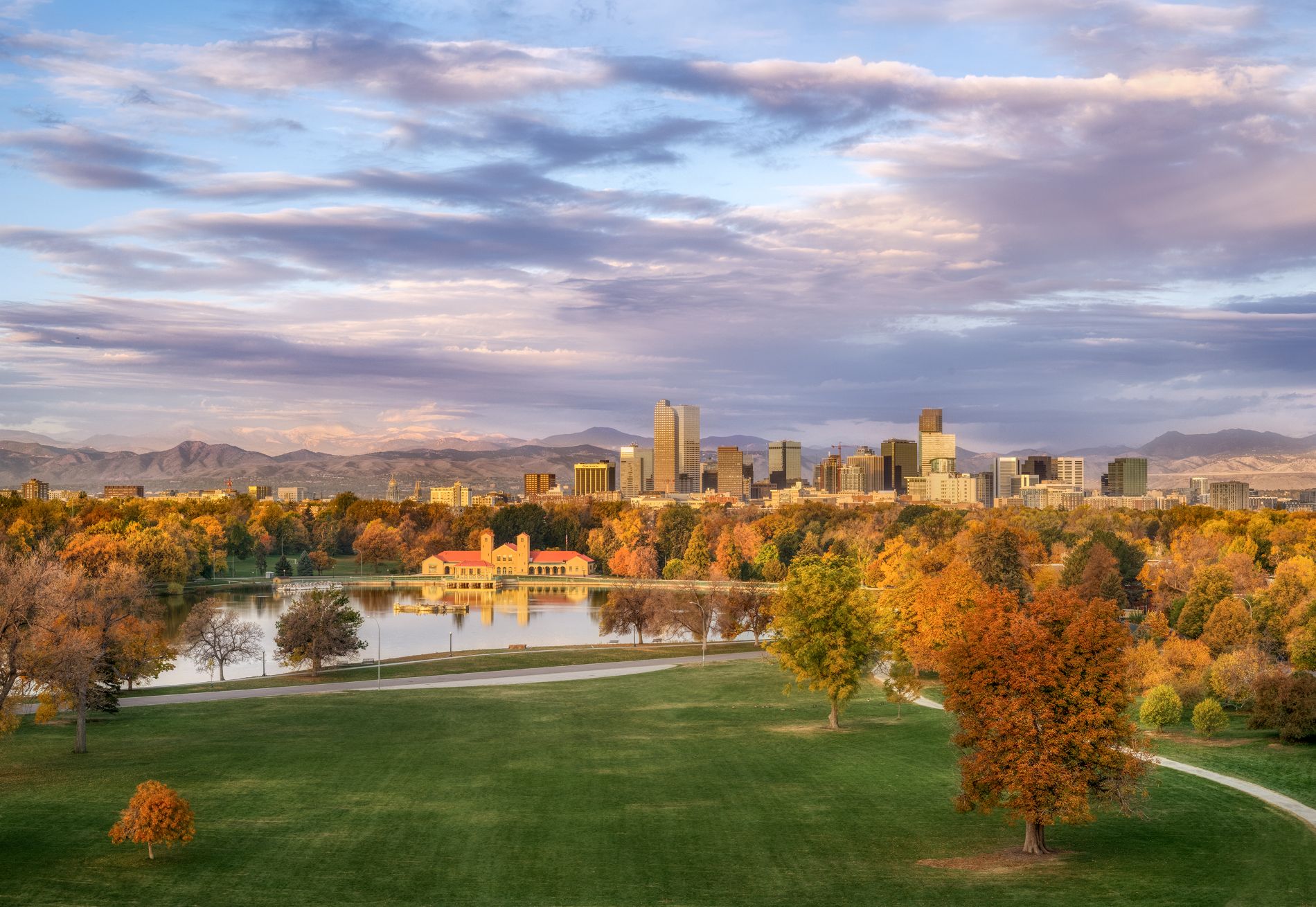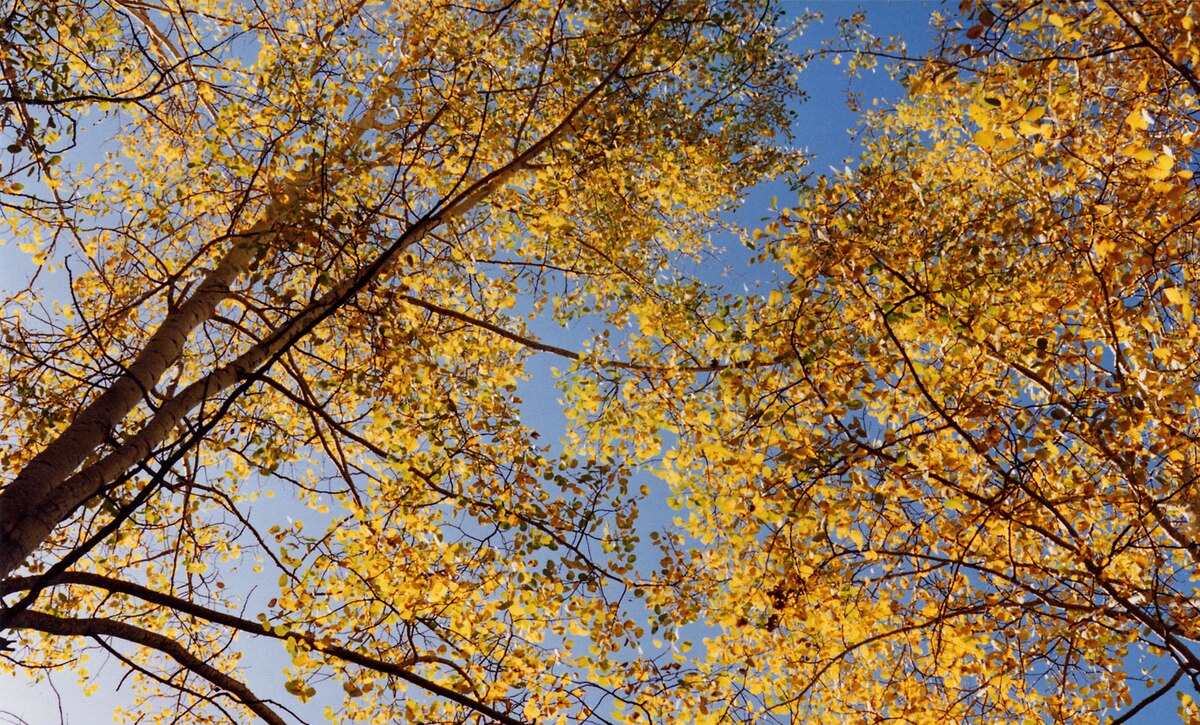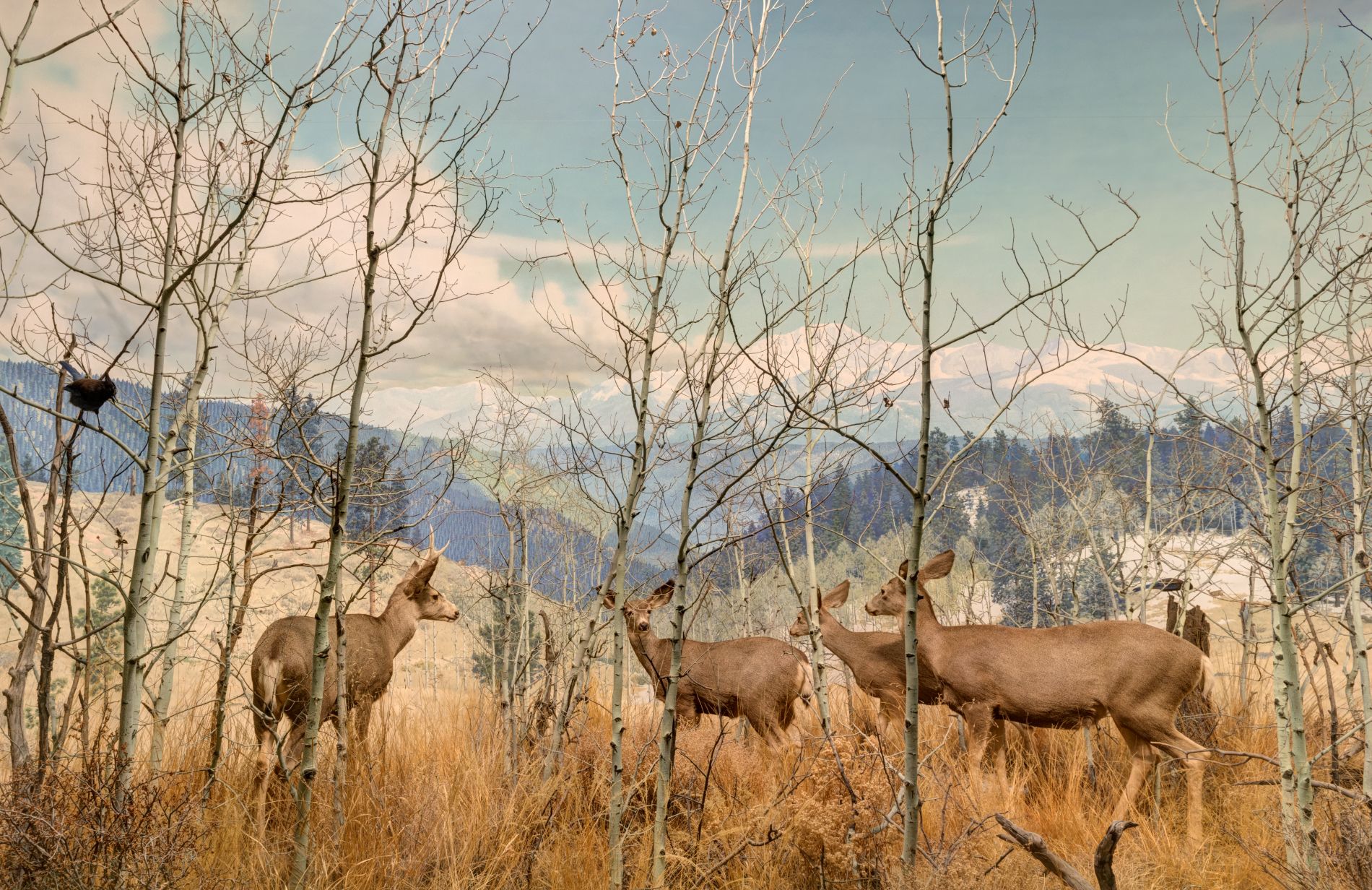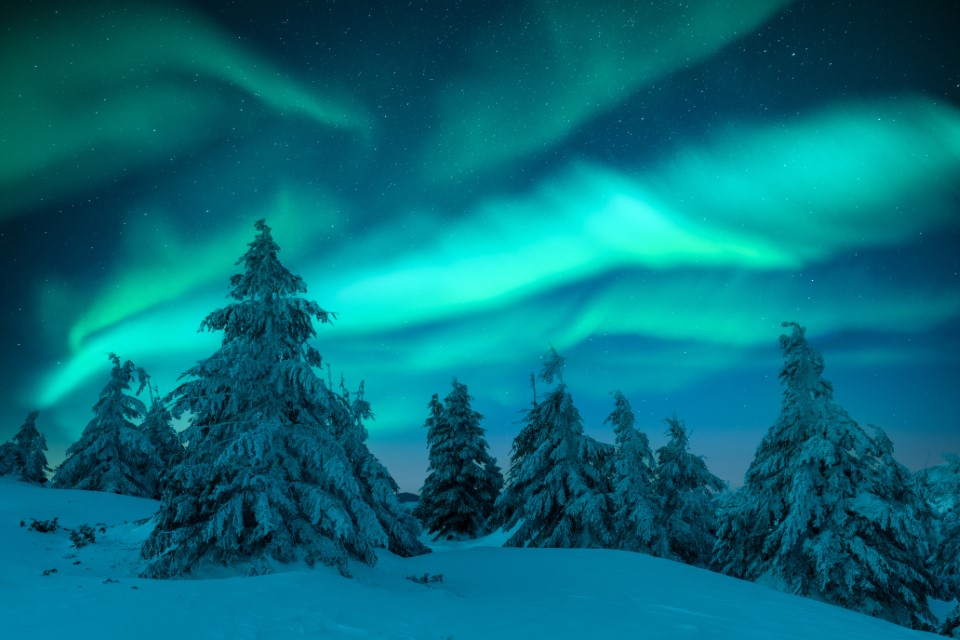CATALYST
DENVER MUSEUM OF NATURE & SCIENCE ONLINE MAGAZINE
Your Child’s Cold Weather Questions, Answered by Science
Have you Ever Wondered Why the Leaves Change Color When It Gets Cold Outside?

The city of Denver skyline, taken from the Anschutz Family Sky Terrace on Oct. 24, 2025. (Photo/ Rick Wicker)
It’s the time of year when the days grow short and the air turns cold. Trees lose their leaves, wild animals come out less and the first flakes of snow start falling form the sky. For jaded adults, the cold weather might make you to think of shoveling snow and scraping ice off a windshield, but for little kids, this changing weather often brings wonder and curiosity. Truth is, the seasons hit different when you can still count on the one hand each winter you've been through!
But with their curiosity and wonder running at all time highs, the questions are sure to come. And if you’re like me, trying to keep up with all the inquiries from my five-year-old, some of them might just catch you off guard! That’s why this Catalyst article is here: to give you a little science and help you stay ready with simple answers to some of kids’ most difficult questions.

Quaking Aspen trees with yellow autumn leaves in New Mexico. (Photo/ Andrew Dunn via Wikimedia Commons)
Why do leaves change color and fall off the tree?
Well, that gets at the question, why do trees have leaves in the first place? Trees use their leaves to collect energy from sunlight, water and air. The leaves are green because they are filled with a chemical that helps to take in the light when it’s sunny out and turn it into food.
When fall arrives, the days get shorter and colder. Trees start preparing for winter by slowing down and conserving their energy. They no longer need to be green to capture sunlight, so the green starts to fade away. That means you can see the other colors that were hiding in the leaf the whole time — like yellows, oranges, and reds. Eventually, the tree sheds all its leaves because they aren’t collecting sunlight anymore and letting them go will help the tree survive through the winter.
Why does it snow?
You can’t always see it, but the air is filled with tiny, little droplets of water — even high up in the sky where the airplanes fly around. When it gets cold, these droplets of water freeze and turn into tiny ice crystals. These crystals then stick together to form snowflakes, which are a little bit heavy and fall down from the sky.
The air has to be cold all the way to the ground for us to see snow, otherwise it will melt and turn into raindrops on their way down. Each snowflake forms in its own unique way depending on the temperature and humidity in the clouds — so no two are exactly alike. Have you ever looked at snowflakes under a magnifying glass? If you look closely, you’ll see that they all look a little bit different!

Winter Mule Deer diorama in the Denver Museum of Nature & Science Wildlife Halls. (Photo/ Rick Wicker)
Where do animals stay warm when it’s freezing cold outside?
Animals have amazing ways to deal with cold weather. Some, like bears and ground squirrels, hibernate — they sleep through winter in cozy dens, living off the fat and food they stored earlier in the year. Then there are those like deer or rabbits who stay active, growing thicker fur and finding food beneath the snow. Even tiny insects can survive by hiding under leaves or snow until spring comes back.
Others, like birds and monarch butterflies, migrate to warmer places where food is easier to find. This month at the Museum, you're invited to learn more about the monarch migration in "Butterfly Journey 3D," which follows millions of monarchs as they make their epic journey to the mountains of central Mexico — arriving just as families gather to honor loved ones who have passed for Día de los Muertos.
Why is it hot in the summer and cold in the winter?
Every year, the Earth makes a big loop around the Sun. But the Earth goes around the Sun while leaning — or tilting — a little to one side. Because of that tilt, different parts of the Earth get more or less sunlight at different times of the year.
When it’s winter where we live, our part of the Earth is tilted away from the Sun, so the sunlight hits us at an angle and it’s not as warm. That’s also why the days are shorter and colder. In the summer, we’re tilted toward the Sun, so the light shines more directly on us, making the days longer and hotter.
And here’s a fun fact — when it’s freezing cold in Denver, it’s summer and really hot in places like Australia! That’s because their part of the Earth is tilted toward the Sun while ours is tilted away.

Magical Winter Nights at the Denver Museum of Nature & Science begins on Nov. 20, 2025 and runs through Jan. 4, 2026. (Photo/ DMNS)
Stay on your wintertime wonder
Aspects of winter can be a drag, but holding onto a little childhood wonder about the magical things happening outside in nature can make a big difference in the energy you're bringing home. The next time you feel tired waking up in the dark or looking for your misplaced glove, take a second to appreciate the frosted tree branches or soft snow settling over the sidewalk — the magic and wonder is out there if you look for it!
Need a little help adding wintertime wonder to your holiday season? Come down to the Museum to experience a whimsical winter wonderland where a dazzling holiday adventure comes alive. This is your chance to see the Museum like you’ve never before as a piece of the familiar turns into the fantastical through an immersive journey of light, sound and surprise. Learn more, here!






